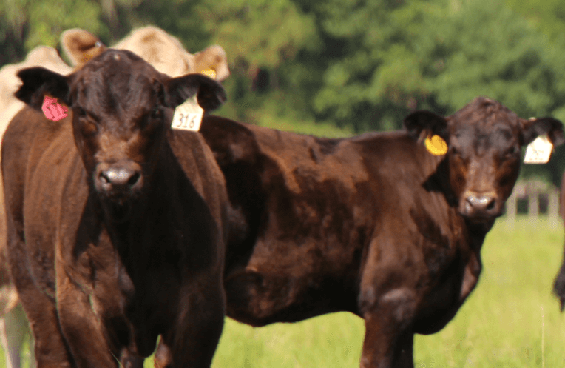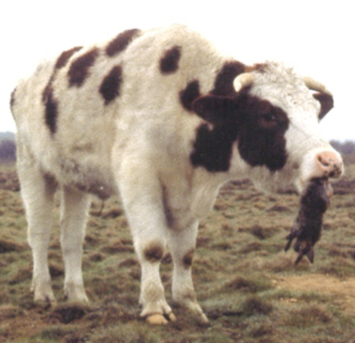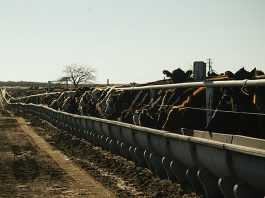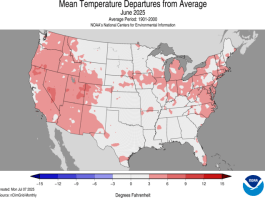 It is important that cattle producers know the cost of adding gain to cattle and the marginal value of that gain. If you know the cost of adding gain to your calves, and you know what the marginal value of that gain is, then you can make good decisions about feeding vs selling.
It is important that cattle producers know the cost of adding gain to cattle and the marginal value of that gain. If you know the cost of adding gain to your calves, and you know what the marginal value of that gain is, then you can make good decisions about feeding vs selling.
These costs and values are often similar from year to year. But when the grain market or the finished cattle market changes, the cost and value of gain will change.
When grain prices are low, feedlot cost of gain is low and light cattle have greater value, making the marginal value of calf gain on pasture relatively low. When grain prices are high, feedlot cost of gain is high and heavy cattle are valued more since they need less grain to finish in the feedlot. This means that the marginal value of gain on pasture is greater than when grain is cheap.
What is Marginal Value?
According to the Business Dictionary: It is the incremental value that is achieved through additional output.
Figuring marginal value tells us if the investments we make in supplements, pasture management, pasture weaning and backgrounding are resulting in better prices for the calves we’re selling
How to Calculate Marginal Value
It is a good practice to calculate these values each year to see what they are and how profitable current management will be or if management needs to be changed to keep in step with the markets. Ideally, we adjust what we’re doing based on what the market is demanding in terms of calf weights.
Here’s how:
The marginal value of calf weight gain is based on the price slide between weight breaks of cattle being sold. The marginal value of calf gain is a little cumbersome since cattle are priced by their value per pound or hundredweight, not by their value per head. To calculate the marginal value of gain, first calculate the value per head within each weight group. Then calculate the difference in value between animals in the weight groups of interest. Adjust this to value per pound by dividing by the difference in weight per head between the two weight groups.
Here’s how it looks on paper using two sets of cattle, one weighing an average of 475 lb. selling for $1.60/lb. and the second weighing 525 lb. selling for $1.55/lb.






Excellent comments and discussion.
My main purpose is to get producers thinking about marginal gain instead of gross value.
The math is correct as given when looking at marginal gain on a lbs. or cwt. basis. If we had use 100 lbs. break it may have been less confusing. Let’s not get too hung up on it since it is only part of what brings home net income.
When selling cattle there are other important factors.
1. What are the weighing conditions? If I’m selling directly off the farm I want to know what are the weighing conditions, before I talk price. Will the cattle be shrunk overnight (penned up without feed), will they be weighed by taking them down the road, off loading at a stock yard and weighing them in groups?
2. Is the set of cattle uniform in weight, breed and sex and enough of them to fill a tractor trailer. This “50,000 lbs.” load is the real marketing unit of beef cattle. In our WV quality beef cattle sales you see this real quick when cattle are being sold. Smaller lots are strongly discounted since they, by themselves, will not fit the big trailer.
3. Are the cattle from a reputation farm. If the producer has a good track record there will be multiple buyers wanting the cattle and the price will go up. It also works the other way if the operation has less than a stellar reputation.
4. Knowing the slide is important. But remember you are using historical data, even if it is only a week old. Has anything happened in the market since last week that makes things different? I have seen the market change overnight when big economic/political events have hit the market. The sale this week is a new event based on the buyers present at the ring or on the phone.
Thank you for your comments. I’ve accomplished my purpose of getting you-all to think about what is the net value in the next 50 to 100 lbs. gain you put on your animals. And yes I do want you to do the math. Putting pencil to paper enables the producers to improve their decision making.
Ed
Thanks for taking the time to respond, Ed. Great to see you here! 🙂
This is the sentence with the error: “The $107.50/cwt. is the value of putting another 100 lbs. gain on the lower weight cattle.”
As Doug said, that sentence should read: “The $107.50/cwt. is the value of putting another 50 lbs. gain on the lower weight cattle.” because that’s the weight difference between your two groups.
You can’t extrapolate that out to 100 lbs without some adjustment. As Doug said, IF (and it’s a big IF!) the slide continues on the same level of 5 cents per 50 pounds, then the value of gain would be around $1.02/lb. However, we don’t know, without seeing the actual prices, whether the slide continues in this same relationship. These relationships continually change.
Bud Williams Marketing teaches you how to understand and profit from what’s happening with the market today. Because, today’s prices are all we know for a fact.
I am going to split some hairs here. The first sentence after the example is wrong
“The $107.50/cwt. is the value of putting another 100 lbs”
If we continue to use a 10 cent slide the VOG on 100# would be 102ish. The VOG of 107.50 is on 50#. I know it was just a wording error, thing is if this mistake were made in real life on a load you’d be off a few grand.
Hi!
Sorry for the delay in posting this. I’ve been out of town. Can you clarify your math so that we all get your point? Some folks (Like me, for example) are not great at math and it helps if we see it laid out in equations. 🙂
Thanks!
Kathy
Comments are closed.